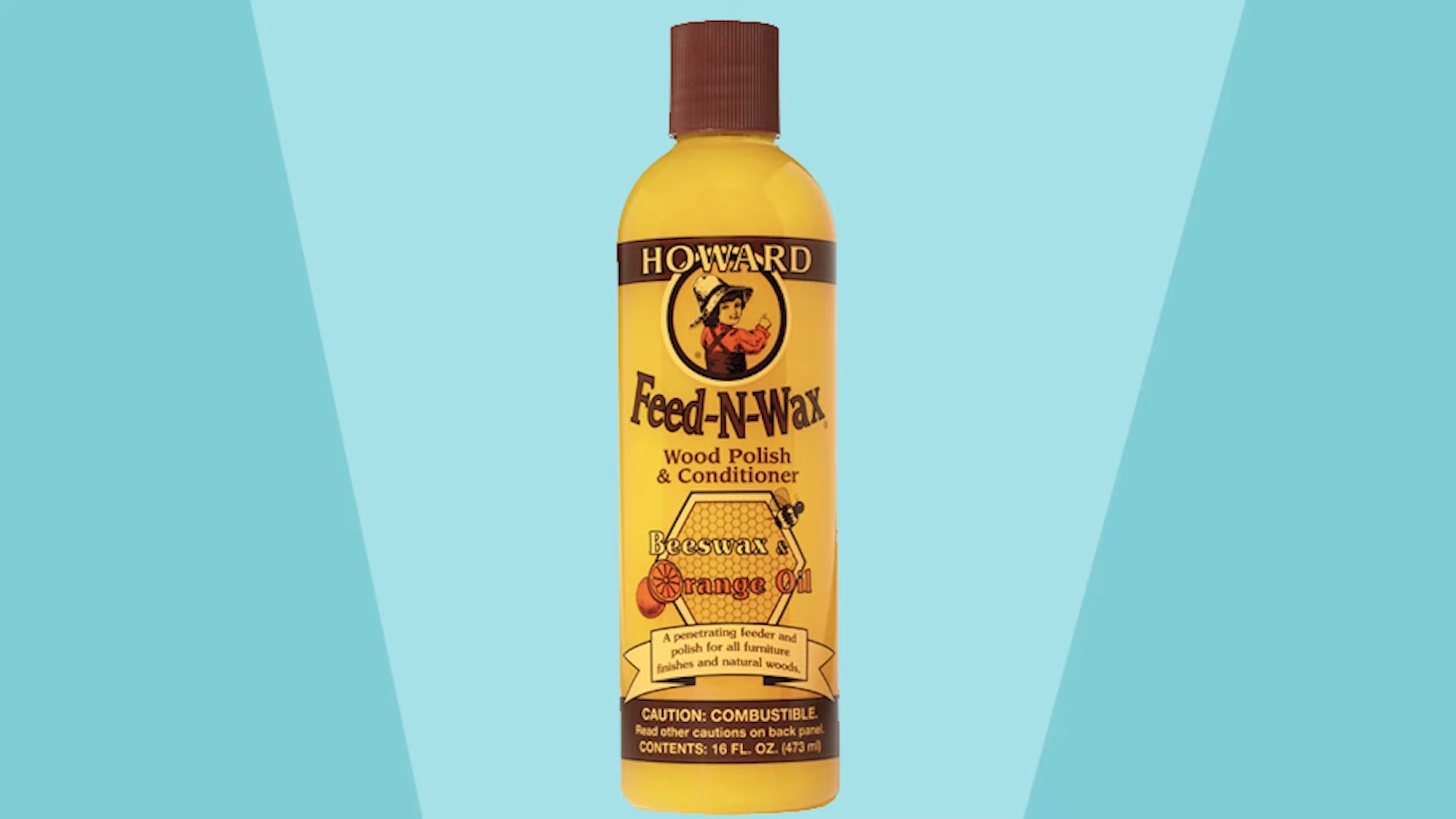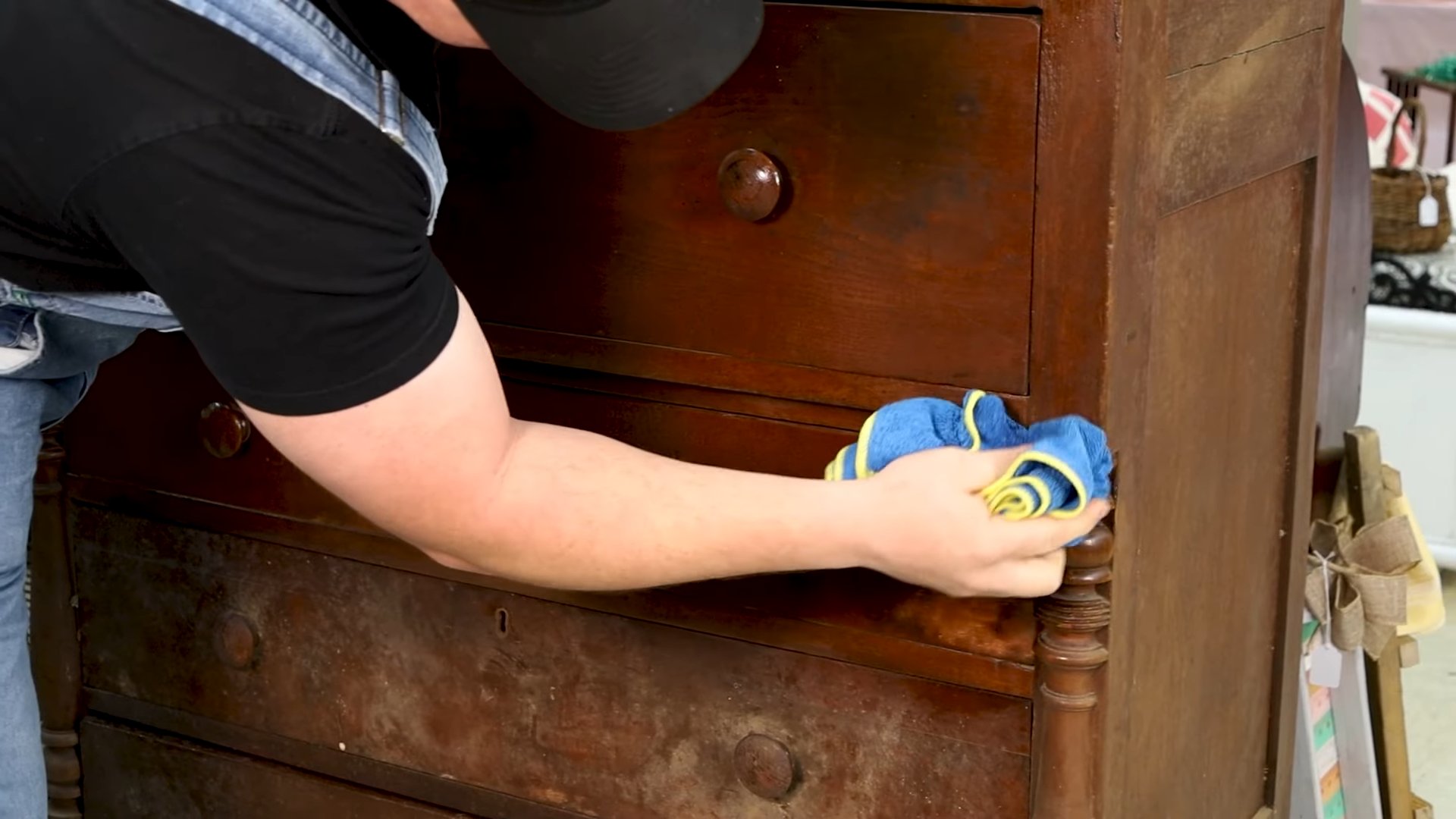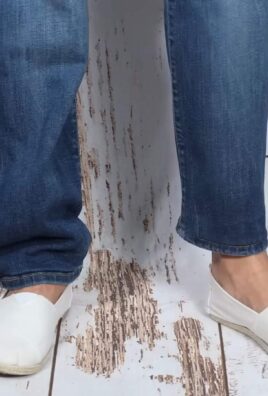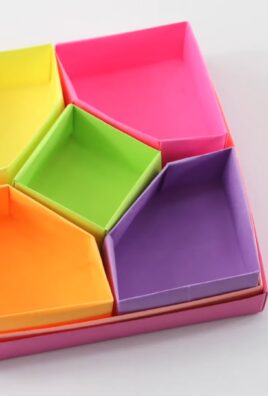Furniture Restoration with Feed N Wax: Is your beloved antique table looking a little…tired? Are those once-gleaming wooden chairs now sporting a dull, lifeless sheen? Don’t despair! Before you resign yourself to replacing them, or worse, covering them up with tablecloths and slipcovers, I’m here to tell you there’s a simple, effective, and surprisingly satisfying solution: furniture restoration with Feed N Wax!
For generations, preserving and enhancing the natural beauty of wood has been a cherished tradition. From the meticulously crafted furniture of ancient Egypt to the hand-carved pieces passed down through families for centuries, the desire to protect and showcase the warmth and character of wood is deeply ingrained in our history. And while professional furniture restoration can be costly, I’m going to show you how to achieve amazing results yourself, using a product that’s both easy to use and incredibly effective.
Let’s face it, life happens. Furniture endures spills, scratches, and the relentless wear and tear of daily use. But with the right approach, you can breathe new life into your cherished pieces and restore them to their former glory. This DIY guide will walk you through the process of furniture restoration with Feed N Wax, providing you with the knowledge and confidence to tackle everything from minor blemishes to more significant signs of aging. So, grab your Feed N Wax, and let’s get started on transforming your tired furniture into treasured heirlooms!

Furniture Restoration with Feed N Wax: A Beginner’s Guide
Hey there, fellow DIY enthusiasts! So, you’ve got a piece of furniture that’s looking a little…tired? Maybe it’s a family heirloom, a thrift store find, or just a piece that’s seen better days. Don’t despair! You don’t need to be a professional restorer to breathe new life into your wooden furniture. I’m going to walk you through how to use Feed N Wax, a fantastic product that’s easy to use and delivers amazing results. It’s my go-to for quick and effective furniture rejuvenation.
What is Feed N Wax and Why Use It?
Feed N Wax is a blend of beeswax, carnauba wax, and orange oil. It’s designed to nourish wood, prevent drying and cracking, and enhance its natural beauty. Think of it as a spa day for your furniture! It’s great for:
* Reviving dull finishes: It brings back the luster and shine.
* Protecting wood: The wax creates a protective barrier against moisture and scratches.
* Conditioning dry wood: The oils penetrate the wood, preventing it from drying out and cracking.
* Easy application: It’s a simple wipe-on, wipe-off process.
* Pleasant scent: The orange oil gives it a lovely, subtle citrus fragrance.
Materials You’ll Need
Before we get started, let’s gather our supplies. Here’s what you’ll need:
* Feed N Wax: Of course! You can find this at most hardware stores or online.
* Clean, soft cloths: Microfiber cloths are ideal, but old t-shirts work well too. You’ll need at least two – one for applying and one for buffing.
* Furniture polish or cleaner (optional): If your furniture is particularly dirty or has old polish buildup, you might want to clean it first.
* Fine-grit sandpaper (optional): For removing stubborn stains or imperfections. I usually use 220-grit or higher.
* Vacuum with brush attachment (optional): For removing dust and debris.
* Gloves (optional): To protect your hands.
* Drop cloth or old sheet: To protect your work surface.
Preparing Your Furniture
This is a crucial step! A clean surface is essential for Feed N Wax to work its magic.
1. Clear the area: Move your furniture to a well-ventilated area and cover your work surface with a drop cloth.
2. Remove dust and debris: Use a vacuum with a brush attachment to remove any loose dust, dirt, or cobwebs. Pay attention to crevices and corners.
3. Clean the surface (optional): If your furniture is dirty or has old polish buildup, clean it with a furniture polish or cleaner according to the product instructions. I often use a mild soap and water solution for general cleaning, making sure to dry the surface thoroughly afterward.
4. Address imperfections (optional): If you have any stubborn stains, scratches, or imperfections, you can try lightly sanding them with fine-grit sandpaper. Be very gentle and sand in the direction of the wood grain. After sanding, wipe away any sanding dust with a clean cloth. Remember, the goal isn’t to completely strip the finish, just to smooth out any rough spots.
Applying Feed N Wax
Now for the fun part! This is where you’ll start to see the transformation.
1. Shake well: Make sure to shake the Feed N Wax bottle well before each use to ensure the ingredients are properly mixed.
2. Apply a small amount: Pour a small amount of Feed N Wax onto a clean, soft cloth. A little goes a long way!
3. Work it in: Apply the Feed N Wax to the furniture in a circular motion, working it into the wood grain. Don’t apply too much at once. You want a thin, even coat.
4. Let it sit: Allow the Feed N Wax to sit on the surface for about 20-30 minutes. This gives the oils time to penetrate the wood. You’ll notice the wood starting to absorb the product.
5. Buff it out: After 20-30 minutes, use a clean, dry cloth to buff the surface. Buff in a circular motion until the excess wax is removed and the surface is smooth and shiny. This step is important for removing any stickiness and bringing out the luster.
Dealing with Specific Situations
Sometimes, you might encounter specific issues that require a little extra attention. Here are a few tips:
* Dry, cracked wood: If your wood is particularly dry and cracked, you might need to apply a second coat of Feed N Wax. Allow the first coat to dry completely (at least 24 hours) before applying the second coat.
* Stubborn stains: If you have stubborn stains that didn’t come out with sanding, you can try using a stain remover specifically designed for wood. Always test the stain remover in an inconspicuous area first to make sure it doesn’t damage the finish.
* Old, thick finishes: If your furniture has a thick, old finish that’s preventing the Feed N Wax from penetrating the wood, you might need to consider stripping the finish completely. This is a more involved process, but it can be necessary for severely damaged furniture. I would recommend researching furniture stripping techniques before attempting this.
* Furniture with intricate carvings: For furniture with intricate carvings, use a soft brush to apply the Feed N Wax into the crevices. This will ensure that all areas are properly treated.
Maintaining Your Restored Furniture
Once you’ve restored your furniture, you’ll want to keep it looking its best. Here are a few tips for maintenance:
* Dust regularly: Dust your furniture regularly with a soft cloth to prevent dust buildup.
* Avoid harsh chemicals: Avoid using harsh chemicals or abrasive cleaners on your furniture.
* Reapply Feed N Wax: Reapply Feed N Wax every few months, or as needed, to maintain the finish and protect the wood. I usually do it every 3-6 months, depending on how much use the furniture gets.
* Protect from sunlight: Avoid placing your furniture in direct sunlight, as this can cause the finish to fade.
* Use coasters and placemats: Use coasters and placemats to protect your furniture from spills and scratches.
Troubleshooting
Even with the best instructions, things can sometimes go awry. Here are a few common problems and how to fix them:
* Streaky finish: If you’re getting a streaky finish, it could be because you’re applying too much Feed N Wax or not buffing it out properly. Try using a clean, dry cloth to buff the surface more thoroughly.
* Sticky residue: If you’re left with a sticky residue, it’s likely because you didn’t buff out the excess wax. Keep buffing until the surface is smooth and dry.
* Dull finish: If your finish is still dull after applying Feed N Wax, it could be because the wood is very dry and needs more conditioning. Try applying a second coat of Feed N Wax after the first coat has dried completely.
* Uneven color: If you notice uneven color after applying Feed N Wax, it could be because the wood is absorbing the product differently in different areas. This is more common with older furniture. You can try applying more Feed N Wax to the lighter areas to even out the color.
Safety Precautions
While Feed N Wax is relatively safe, it’s always a good idea to take a few precautions:
* Ventilation: Work in a well-ventilated area.
* Gloves: Wear gloves to protect your hands.
* Eye protection: Wear eye protection if you’re concerned about splashes.
* Keep out of reach of children: Store Feed N Wax out of reach of children and pets.
* Dispose of cloths properly: Dispose of used cloths properly, as they may be flammable.
Alternative Products
While I love Feed N Wax, there are other products you can use for furniture restoration. Here are a few alternatives:
* Beeswax polish: Pure beeswax polish is a natural and effective way to protect and condition wood.
* Lemon oil: Lemon oil is a good option for cleaning and polishing wood furniture.
* Tung oil: Tung oil is a natural oil that provides a durable and water-resistant finish.
* Linseed oil: Linseed oil is another natural oil that can be used to protect and condition wood.
Remember to always test any new product in an inconspicuous area before applying it to the entire piece of furniture.
Final Thoughts
Restoring furniture with Feed N Wax is a rewarding project that anyone can do. It’s a simple and effective way to breathe new life into your old furniture and protect it for years to come. So, grab your supplies,

Conclusion
So, there you have it! Reviving tired furniture doesn’t require expensive professional services or harsh chemicals. This simple, yet incredibly effective, DIY furniture restoration trick using Feed N Wax is a game-changer for anyone looking to breathe new life into their beloved pieces. We’ve shown you how easy it is to clean, protect, and enhance the natural beauty of your wood furniture with minimal effort and maximum impact.
Why is this a must-try? Because it’s a cost-effective, time-saving, and environmentally conscious way to maintain and restore your furniture. Forget about sanding down entire surfaces or dealing with messy stains and varnishes. Feed N Wax offers a gentle approach that nourishes the wood, prevents drying and cracking, and brings out the richness of the grain. It’s a one-stop solution for cleaning, conditioning, and protecting your wood furniture.
But the beauty of this DIY trick lies in its versatility. While we’ve focused on using Feed N Wax on wood furniture, don’t be afraid to experiment! You can also use it on wood trim, doors, and even some leather items (always test in an inconspicuous area first). For a deeper clean on heavily soiled pieces, consider using a mild soap and water solution followed by a thorough drying before applying the Feed N Wax. If you’re looking for an extra layer of protection, you can apply multiple thin coats of Feed N Wax, allowing each coat to dry completely before applying the next. Remember, less is more!
Furthermore, consider the type of wood you’re working with. While Feed N Wax is generally safe for most wood types, including oak, pine, maple, and cherry, it’s always a good idea to test it on a small, hidden area first to ensure compatibility. For antique furniture, proceed with extra caution and consult with a professional if you’re unsure about the best approach.
We are confident that once you try this DIY furniture restoration trick, you’ll be amazed by the results. It’s a simple, satisfying, and rewarding way to care for your furniture and preserve its beauty for years to come.
Now it’s your turn! We encourage you to give this DIY furniture restoration method a try and see the difference it can make. Don’t be shy – share your before-and-after photos and your experiences in the comments below. We’d love to hear your tips, tricks, and variations on this method. Let’s build a community of furniture restoration enthusiasts and help each other keep our homes looking beautiful! We are sure that you will love the results of using Feed N Wax on your furniture.
Frequently Asked Questions (FAQ)
What exactly is Feed N Wax, and what does it do?
Feed N Wax is a blend of beeswax, carnauba wax, and orange oil. It’s designed to clean, condition, and protect wood furniture. The beeswax and carnauba wax provide a protective layer that helps prevent drying, cracking, and fading, while the orange oil helps to dissolve dirt and grime and enhance the natural beauty of the wood grain. It essentially nourishes the wood, keeping it healthy and looking its best.
Is Feed N Wax safe to use on all types of wood furniture?
Feed N Wax is generally safe for most types of wood furniture, including oak, pine, maple, cherry, and walnut. However, it’s always a good idea to test it on a small, inconspicuous area first to ensure compatibility and that it doesn’t alter the color or finish of the wood. For antique furniture or pieces with delicate finishes, it’s best to consult with a professional before using any cleaning or restoration products. Avoid using it on surfaces that are intended for food preparation.
How often should I use Feed N Wax on my furniture?
The frequency of application depends on the condition of your furniture and the environment it’s in. In general, applying Feed N Wax every 3-6 months is sufficient for most pieces. However, if your furniture is exposed to direct sunlight, dry air, or frequent use, you may need to apply it more often. You’ll know it’s time to reapply when the wood starts to look dry or dull.
Can I use Feed N Wax on furniture with a varnish or lacquer finish?
Yes, Feed N Wax can be used on furniture with a varnish or lacquer finish. It will help to clean and protect the finish, preventing it from drying out and cracking. However, it’s important to apply it sparingly and buff it thoroughly to avoid leaving a sticky residue. If you’re unsure about the compatibility of Feed N Wax with your finish, test it on a small, hidden area first.
What if my furniture is heavily soiled or has stubborn stains?
For heavily soiled furniture, you may need to clean it with a mild soap and water solution before applying Feed N Wax. Use a soft cloth to gently wipe down the surface, and then dry it thoroughly with a clean cloth. For stubborn stains, you may need to use a specialized wood cleaner or stain remover. Always follow the manufacturer’s instructions and test the product on a small, hidden area first. Once the furniture is clean and dry, you can apply Feed N Wax as directed.
How do I apply Feed N Wax correctly?
Applying Feed N Wax is simple. First, shake the bottle well. Then, apply a small amount of Feed N Wax to a clean, soft cloth. Gently rub the cloth onto the furniture in a circular motion, working it into the wood grain. Allow the Feed N Wax to sit for a few minutes, and then buff the surface with a clean, dry cloth until it’s smooth and shiny. Avoid applying too much Feed N Wax, as this can leave a sticky residue.
Can I use Feed N Wax on leather furniture?
While Feed N Wax is primarily designed for wood furniture, some people have had success using it on leather furniture. However, it’s important to proceed with caution and test it on a small, inconspicuous area first. Feed N Wax can help to condition and protect leather, but it may also darken the color or alter the texture. If you’re unsure about using Feed N Wax on your leather furniture, it’s best to consult with a leather care professional.
What are some alternative products to Feed N Wax?
There are many alternative products to Feed N Wax available on the market, including other beeswax polishes, furniture oils, and wood conditioners. Some popular alternatives include Howard Orange Oil, Old English Furniture Polish, and Murphy Oil Soap. When choosing an alternative product, be sure to read the label carefully and select one that is appropriate for the type of wood and finish you’re working with.
Where can I purchase Feed N Wax?
Feed N Wax is widely available online and at many home improvement stores, hardware stores, and furniture stores. You can also purchase it directly from the manufacturer’s website. Be sure to compare prices and read reviews before making a purchase.
What should I do if I accidentally apply too much Feed N Wax?
If you accidentally apply too much Feed N Wax, don’t panic. Simply use a clean, dry cloth to buff the surface thoroughly until the excess product is removed. You may need to use a bit of elbow grease to get rid of the sticky residue. If the residue persists, you can try using a slightly damp cloth to wipe down the surface, followed by a thorough drying with a clean cloth.





Leave a Comment